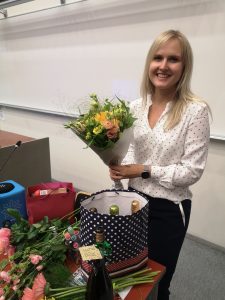Last Friday, June 9th, 2023, Andre Leesment successfully defended his PhD thesis titled Quantitative studies of Brønsted acidity in biphasic systems and gas-phase. The opponent was Prof. Kiyohiko Sugano from the Ritsumeikan University, Japan.

Experiments for measuring acidity of medicines, catalysts, and other chemicals are almost always performed under monophasic conditions. However, many of them are lipophilic compounds, and in biphasic systems they prefer the nonpolar organic phase, where their properties are much different from their properties in an aqueous phase. Yet the interactions with the organic phase are completely ignored in a typical acidity measurement. It’s like seeing only half of the picture. Why is such an incomplete approach being used for something this important?
Until recently, there was no theoretical basis or experimental method to conduct measurements of acidity under more relevant conditions. Andre’s PhD thesis focuses on providing the tools to measure acidity, and by extension, many other properties of molecules in biphasic systems in a more realistic and accurate way. Hopefully, these tools lead to a more effective drug development, catalyst research, etc.
Congratulations to you, Andre!











